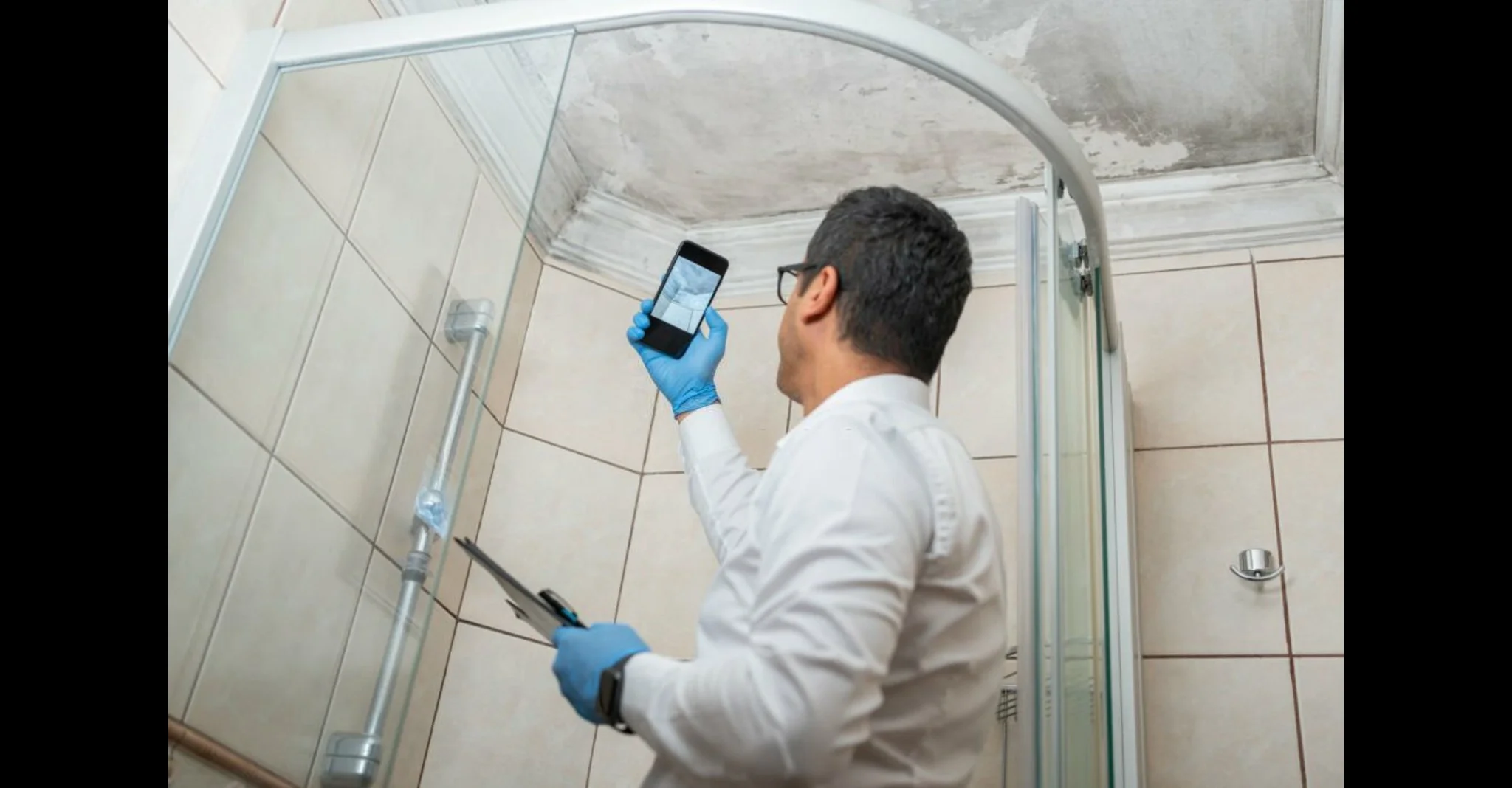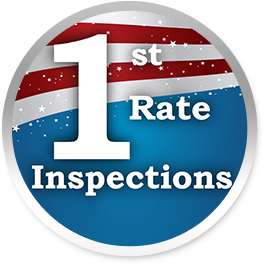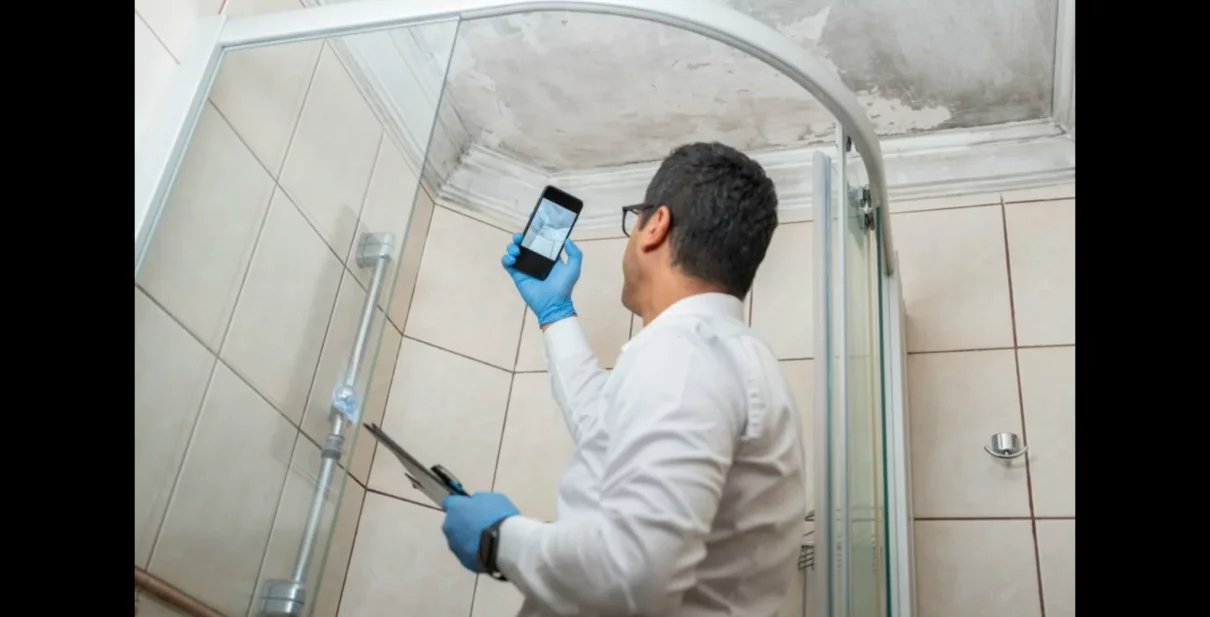
Do you suspect mold in your home or workplace? It’s important to test for it properly. Mold exposure can risk your health, especially those with respiratory issues. If you notice the signs of mold patches in your home, don’t wait to take quick action. These signs may include musty odor, water leaks, moisture or damp spots, peeling paint, and warped surfaces. Mold could also be the reason for a constant decline in your health, like respiratory issues, coughing, and eye irritation.
So what to do?
Some people opt for DIY methods for mold testing, and some go for professional mold testing. Both methods have their own significance – you’ll find later in this blog what’s best and why.
1st Rate Inspections is here to guide you throughout the professional mold testing. In this blog, we will talk about what’s covered in a mold inspection checklist. Then, we’ll weigh the pros and cons of both professional mold testing and DIY home mold tests.
So, without any further ado, let’s get into it
What’s Covered in a Mold Inspection Checklist?
A thorough mold inspection covers several areas of a home or building. Professional home inspectors identify mold presence, its breeding ground, type, and extent of mold damage caused. From interior and exterior inspections to reporting and recommending solutions – thorough and professional mold testing includes that all. Let’s break down what a mold inspection checklist contains.
Exterior Inspection
Mold isn’t just another cosmetic issue. But it can affect your health or compromise the structural integrity of your home or workplace. During the mold inspection, the inspectors assess your place, starting from the exterior area. They look for elements that create favorable conditions for mold to grow.
For instance, standing water, gutters overflowing, grading issues, and proximity of vegetation or downspouts draining. The inspectors also assess other external areas for different issues like roof leaks and exterior walls for water damage.
Interior Inspection
Moving inside, the inspectors thoroughly assess your place’s interior elements. They check plumbing systems for leaks that contribute to mold growth. They’ll also check your HVAC system, including ductwork, to find any mold exposure. Other interior areas or elements are also evaluated for signs of mold damage, including windows, doors, ceilings, walls, and floors.
Moisture Measurement
Moisture is the top element contributing to mold growth. Professional mold testing methods include using specialized tools like a moisture probe to assess your place for higher moisture levels or humidity. The skilled inspectors check for condensation on windows and other surfaces. They leave no stone unturned to locate potential breeding grounds for mold.
Ventilation Assessment
Proper ventilation prevents mold damage in your residential or commercial property. The mold inspectors assess your space for adequate ventilation. They verify whether your property is prone to moisture damage in the most susceptible areas like bathrooms and kitchens. They also inspect the working of exhaust fans. They ensure proper airflow and reduce the potential of mold colonization.
Basement And Crawl Space Inspection
Basements and crawl spaces are usually more prone to moisture and mold damage due to high humidity. Thorough mold inspection checklists include inspecting these areas for water intrusion, flooding, and conditions of foundation walls and floors. The inspectors also identify potential sources of mold.
Attic Inspection
Attics are often overlooked, but their improper ventilation can harbor mold. The well-trained mold inspectors assess attics for proper ventilation, leaks, moisture, and mold growth. They highlight areas and conditions conducive to mold growth and damage.
Building Materials Inspection
Some materials, like drywall and wood, foster mold growth more than others when wet. The mold inspectors check for certain building materials. They also examine the walls, ceilings, and floors for water stains. Besides this, they look for insulation and other building features that are prone to mold infestations.
Report And Recommendations
Finally, inspectors detail all findings and recommendations for correction in a full mold inspection report. This outlines the scope of any issues and how to prevent mold growth in the long run.
Professional Mold Testing Vs. DIY Home Mold Tests
While home mold test kits are a good option, you can’t completely rely on them. Even after their procedure, you’ll still need professional advice. So why not go the right way already? On the other hand, choosing professional mold testing is of benefit to you in every way. The professionals cover every nook and cranny of your place to look for mold patches.
Let’s break down the pros and cons of both methods. So you can decide what works best for you.
Pros Of Professional Mold Testing
There are several feature perks to hiring professional mold testing services that give them a competitive edge over DIY home test kits.
Expertise
Professionals have extensive knowledge of the different types of molds. They can identify which ones are more hazardous. They also infer which areas are more prone to mold attack and where infestations may lurk. These inspectors use proper methods for collecting samples. They know how to interpret results accurately.
Accuracy
With the right equipment and methodology, mold inspectors can precisely pinpoint areas of mold growth. They ensure no hidden mold patches are missed. This gives the homeowners peace of mind after testing is complete.
Comprehensive Assessment
A comprehensive inspection looks over all susceptible areas inside and outside the home that could host mold. The inspectors determine root causes like leaks or ventilation issues and can check inside walls.
Detailed Reports
Inspectors document all findings clearly in an official mold testing report. This includes lab results, problem areas, likely causes, and recommended repairs or maintenance as needed.
Cons Of Professional Mold Testing
No doubt, professional help is always the best for whatever purpose. But it may have temporary cons sometimes. So here’s a rundown of them.
Cost
Professional mold inspection fees can range from hundreds to thousands of dollars depending on the size of the home and the extent of the issues.
However, this one-time cost saves you repetitive expenses of repair and maintenance in the long run. It also saves you from potential health risks and property damage. This investment is worth every penny.
Inconvenience
You have to schedule inspector visits instead of doing a quick at-home test whenever you want. And if they do extensive sampling, repairs may be needed afterward. But, identifying a hidden mold issue before it gets worse makes this hassle worth it for most homeowners.
Pros of DIY Home Mold Tests
For those trying to save money, home mold test kits do offer some benefits. But reading this section – you decide what to save: money or your property.
Cost-Effective
Home kits typically range from $10 to $50. This affordable option may appeal to you if you are on a tight budget.
Quick Results
Many home mold test kits provide almost instant results. That’s why, instead of waiting days for lab testing, people prefer DIY home mold tests. This gives you an idea of mold presence so you can take quick action.
Ease Of Use
Most DIY kits come with simple instructions and materials. This way, you can take swabs or air samples yourself.
Cons Of DIY Home Mold Tests
However, DIY kits have some notable downsides as well. The limitations of home kits in terms of accuracy, analysis, and visibility of problem areas make them more of a screening tool. For definitive mold detection, professional testing is still the gold standard.
Limited Accuracy
Without professional methods, equipment, lab testing, and expertise in interpreting results, home kits can miss toxic molds or underestimate the extent.
Interpretation Challenges
It can be challenging for non-experts to analyze samples accurately to identify specific mold species, especially more dangerous black mold.
Limited Scope
Home kits only sample where you swab or expose strips. So they often fail to detect hidden mold behind walls, under materials or lurking out of sight.
Professional Verification Needed
Even if DIY kits indicate mold, it’s wise to hire an inspector afterward for thorough testing before undertaking expensive removal.
Final Thoughts
If you suspect mold at your home or workplace, we suggest you seek professional mold testing services. Although you can use DIY home mold tests for initial screening, you’ll still have a strategic, professional way to identify mold patches all over your place. This will save both your family from health risks and your property from depreciation. Scroll through our other blogs to learn more about everything mold.





